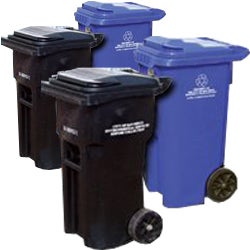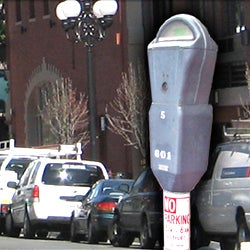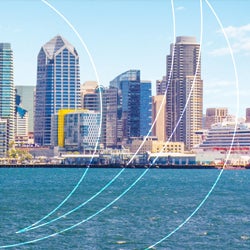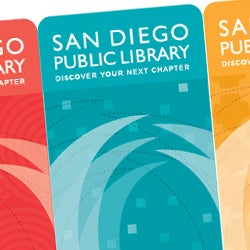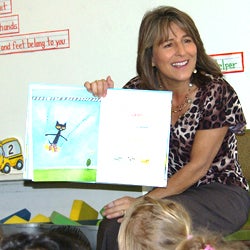Balboa Park Facilities
Administrative Courtyard Lawn
The Administrative Courtyard Lawn is available for special events.
Alcazar Garden
The Alcazar Garden is available for special events.
Balboa Club
Originally located at a site south of Marston Point, the Balboa Club moved to their current location in 1961. Members enjoy both friendly and competitive chess and checkers matches as well as other activities. The horseshoe pits, located just north of the Club, are operated and maintained by the Balboa Park Horseshoe Club.
Balboa Park Carousel
The Balboa Park Carousel is one of only a few built by Herschell-Spillman Co. of New York that are still operational. Originally built in 1910 for Los Angeles' Luna Park, the carousel was moved to Coronado's Tent City and various locations within Balboa Park before finally settling at its current location along Park Boulevard. The carousel operates daily during the summer and on weekend and school holidays throughout the rest of the year.
Balboa Park Club
The Balboa Park Club is available for special events.
Botanical Building
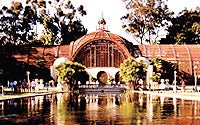
Carleton Winslow designed the Botanical Building for the 1915 Panama-California Exposition. The building was closed from 1941 to 1959 for a reconstruction that cost $63,500 and used more than 70,000 linear feet of redwood. Another reconstruction was completed in 1994. Today it houses more than 350 species of plants and displays which are changed seasonally. The Botanical Building is open Friday through Wednesday from 10 a.m. to 4 p.m.; closed on Thursday and City holidays. Admission is free.
Cabrillo Bridge (Laurel Street Bridge)
The simple, yet majestic Cabrillo Bridge served as the grand entryway into the first exposition's "Magic City." Inspired by ancient Roman aqueducts, the bridge still provides a graceful link between the museum corridor and the Park's West Mesa. One of the first people to ride in a car across the bridge, as part of the dedication ceremony, was future President Franklin Delano Roosevelt.
Casa de Balboa
The Casa del Balboa building has undergone numerous incarnations and almost as many name changes. Originally conceived as a temporary exhibits building during the first exposition, it was first called the Commerce and Industries Building. In subsequent years it was referred to as the Canadian Building, the Palace of Better Housing and the Electric Building. At various times the building has been home to the San Diego Society of Natural History, the Aerospace Museum and other groups. After an arson fire destroyed the original building in 1978, an enlarged replica, renamed the Casa de Balboa, arose in its place. Currently housed within its spacious confines are: The Museum of San Diego History and Research Archives, both operated by the San Diego Historical Society; the Museum of Photographic Arts; the San Diego Model Railroad Museum; the Committee of 100, a group dedicated to the preservation of Spanish Colonial Architecture within the Park; the Balboa Art Conservation Center, providing conservation and preservation personnel and facilities to a consortium of public institutions as well as private citizens; and the Café in the Park.
Casa del Prado
The Casa del Prado is available for special events.
Centro Cultural de la Raza
Housed in a former water storage tank built during World War II, the Centro Cultural de la Raza began presenting programs celebrating tribal, Mexican and Chicano arts and culture in the early 1970s. The Centro, which is adorned with richly symbolic murals, continues to present a diverse array of performing and visual arts programs.
Community Christmas Tree
The Community Christmas Tree, a cedar tree (Cedrus deodara) planted in 1981, is decorated and lit to celebrate the holiday season. It is located north of the Spreckles Organ Pavilion.
Desert Garden

The Desert Garden was originally located west of the Balboa Park Club as early as 1935. In 1977, it was reestablished east of Park Boulevard and has more than 150 species of cacti and other desert plants from North and South America.







